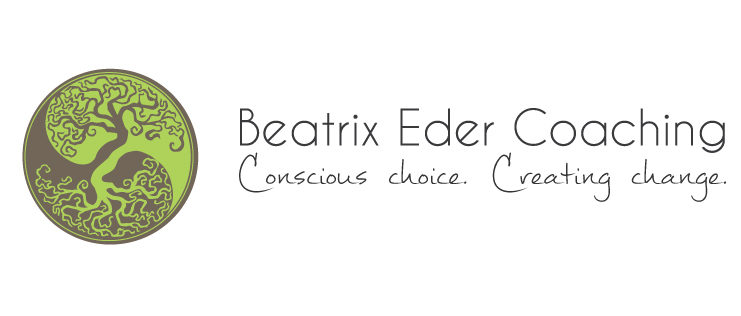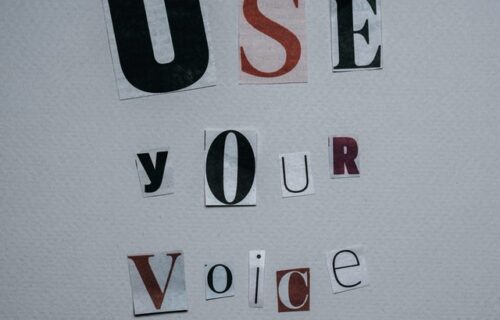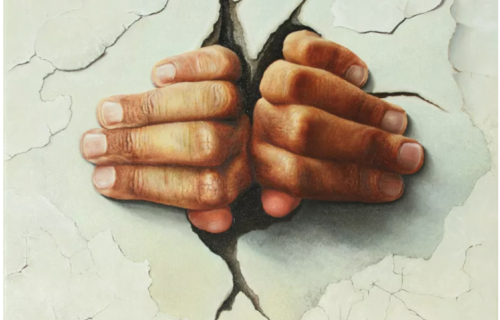
How to handle uncertainty
How you respond to difficult situations creates who you are
Find inner peace with a 4-step process and take better decisions
Since the outbreak of COVID-19, fear is running high across our societies. Each one of us is impacted in one way or another and no one can foresee the implications in business, social or private life. It is like running on a foggy path under time pressure.
We are facing a complex situation with multiple interconnected variables that evolve quickly and unpredictable ways. The effects created by this dynamic are ambiguity and uncertainty.
Human brain and uncertainty
Our brain continuously scans the environment, assessing if there is any threat to our survival. We constantly get input, evaluate it, make meaning of the data and create this way our subjective reality. We do not only anticipate upcoming events, we recognize patterns and plan for the future. This capacity of our brain also teaches us about the transience and impermanence of life.
Despite the understanding of the impermanence of things, our brain values certainty and perceives anything uncertain and ambiguous as utterly aversive. A sense of certainty gives us the impression of control and satisfies our need for safety.
Speculation with high stakes creates anxiety
Consequently to understanding the impermanence of things, we also know that the future exists but we don’t know what it will bring.
This creates a sense of uncertainty, which is quite different from ignorance. When we are ignorant of something, there is no feeling of uncertainty. To feel uncertain requires a conscious awareness of something.
This also explains, why we usually prefer dealing with a predictable bad news instead of a vague uncertainty: knowing about the bad thing allows us to plan how to react and this gives us again a feeling of being empowered.
However, when the potential outcomes are too complex, volatile and uncertain, our mind can run wild with worrying and speculation. Continuously thinking about potential future threats consumes our energies and can leave us feeling anxious and powerless, especially when the stakes are high.
In cases of uncertainty where the risk is manageable, we can transform our doubt and fear into excitement but in the current situation with COVID-19 that is often very difficult.
Uncertainty as mental state
If we observe uncertainty, we can conclude that uncertainty is not so much an objective feature of the physical world around us. Rather it is a mental state, a subjective experience that influences our physical and emotional response to situations.
So this is a dilemma of our common humanness: we live in a system that is constantly changing, we are aware of this impermanence and yet we want certainty and cling on to the illusion of it.
The amygdala hijack
When we feel threatened, overwhelmed and powerless facing uncertainty, it is natural to spiral into our most basic responses of fight, flight or freeze. This response is automatically activated in the limbic system of our brain: the amygdala responds to stimuli that we pick up consciously and unconsciously. Stimuli is being processed in order of significance - and fear is very significant.
When the amygdala is strongly reacting to a perceived physical or emotional threat, it overrides the frontal lobes of your brain. This in turn will limit the functioning of areas that are responsible for higher-level cognitive tasks such as rational thinking, reasoning, planning and decision-making.
Being the master of your mind or a string puppet of your mind
When your fear and the uncertainty of a given situation are overwhelming you, you are not consciously choosing your response anymore. Instead of being the master of your mind, you become a string puppet of your mind.
An additional risk of being hijacked by the amygdala is that the effects are highly contagious. Our mind is not only within our brain and our body; our mind equally exists and reacts to and with the mind of people around us.
So what can we do to calm our nervous system? And going a step further: how can we resist being pulled into the amygdala hijack of others and instead pull them into our inner peace?
Step 1: Awareness
As always, the first step starts with awareness. Only by observing ourselves with an attitude of kind & curious detachment can we move out of our limbic response and automatic reactions.
In order to tap into the field of future and possibility, you first have to be aware. You can use your awareness as a tool to discover what is and with some practice, you can train yourself to lower the reactivity threshold and pause before responding to stimuli.
When you become aware of your feelings and thoughts, you are not identified with them anymore. “I am afraid / angry / stressed” becomes “I am experiencing fear / anger / stress”. This is not just semantics but a big difference in how you perceive yourself and how you respond to situations.
Step 2: Present moment attention
Once you have paused, you bring your full attention to the present moment, the Here and Now. A good starting point is tuning in to your bodily sensations. How is your breathing? Do you feel your heartbeat? What is your body temperature like? Do you have areas that are tense?
Intentionally paying attention with kindness and curiosity calms your nervous system, stabilizes your mind and integrates your awareness. Attention is a key element to transformation and to be able to pay attention in a curious and non-judgmental way requires acceptance.
Step 3: Acceptance
The interesting thing with acceptance is that allowing things to be as they are also allows changing them. Accepting situations and all our mixed feelings about them creates trust in ourselves and in the ups and downs of life. This trust becomes then the foundation for your resilience and creativity.
Acceptance of what is does not equal giving up, settling for something that you don’t like or surrendering. Acceptance is rather a yielding and gracious energy: it is flowing with the current of what is instead of labeling it, criticizing it, rejecting it, fighting it.
Only when you start accepting what life presents in any given situation, can you use life’s challenges to grow.
Step 4: Choice
Becoming aware and accepting what is brings you to the field of possibility and choice. Being fully in the present moment allows you to choose the best response for the present moment.
After all, we are living in an eternal present moment: the past and the future are projections of the mind to be able to orient us in time. When you circle around thoughts of “What if…”, you are either stuck in the past or in the future, without the possibility to find a solution.
Conversely, when you bring yourself in the Here and Now, you can mobilize your energies and skills to take the best action according to your knowledge of the situation and your personal values.
Your present shapes your future
The degree of your awareness and the way you choose your response shape both your future and the person that you are becoming.
* * *
My coaching is strongly influenced by mindfulness and somatic coaching, two practices that help my clients be fully in the Here and Now.
Question for reflection
- What is your instinctive response to uncertainty?
- How do you bring yourself into the present moment?
- How did your decisions change when you reacted immediately versus when you hit the pause button and chose your response?



